By Pamela Burke
Twitter: dianemeiernyc
If you’re looking for a person who understands style and self-expression, look no further than Diane Meier, author of the recently-released paperback “The Season of Second Chances.” Diane is the founder (at age 29) and Creative Director of MEIER, an award-winning NYC marketing firm.
“We only have the shortest time on earth–only the tiniest bit of time–and shame on us if we don’t make our mark.” Diane Meier
 Her experience at the beginning of her career at top companies like Avon, Revlon, and Elizabeth Arden paved the way for her to launch her own marketing empire. As winner of many of the industry’s top honors, articles about MEIER have been published in magazines and graphic design books all over the world.
Her experience at the beginning of her career at top companies like Avon, Revlon, and Elizabeth Arden paved the way for her to launch her own marketing empire. As winner of many of the industry’s top honors, articles about MEIER have been published in magazines and graphic design books all over the world.
Diane’s first novel is about the renovation of a house and a soul and seemed fascinating fodder for me and readers of TWE who cherish the opportunity to review and renew. Getting the chance to talk with Diane about the wonders of the “eye” and much more was indeed a pleasure…
EYE: Your book is all about second chances. Do you think everyone has the opportunity to have them? Is this all about reinvention?

DIANE: I think my book was about a particular woman, Joy Harkness, with particular issues. Not everyone gets their life as wrong as Joy does. And while everyone doesn’t need a second chance, most people give themselves a lot of reasons not be to be fully expressive as to what they’re saying about their lives.
Self-expression, the idea of presenting yourself in an authentic and personally original way, is vitally important. It’s really all you have to leave of yourself– the clear impression that you were here on earth.
“It takes work to be original. You have to have more courage.”
EYE: Why do you think people aren’t more self-expressive?
DIANE: People are cowed by wondering whether what they might say is important enough. What we choose and the ways we choose to express ourselves, as individuals and as a culture, is a subject that fascinates me.
It takes work to be original. You have to have more courage. We excuse ourselves, especially woman of a certain age. Many of us have not been urged to express ourselves. We didn’t see that there was any power in it in the past.
“My parents taught me that we can all be creative. Interiors were ‘living art forms’ in our family.”
EYE: I read where your mother was a great influence on you.
DIANE: I grew up in an unusual household. My mother was a master of painted finishes, a colorist for a lot of great interior designers like Billy Baldwin. She was very creative and did not set artistic limits for me. My father was an international contractor/businessman, but in his heart he may have been a frustrated architect. He was also immensely creative, though on the practical side.
As a child I was encouraged to chose all the fabrics, carpets and colors for my rooms. My parents taught me that we can all be creative. Interiors were “living art forms” in our family.
EYE: Another book that you’ve written is called “The New American Wedding.” What did you find out about the traditions of weddings?

DIANE: For that book I interviewed 1000 people about their expression in that ritual. I did 100 in-home interviews and heard their stories. The book embodied changes in the expression of non-traditional marriage.
The couples I interviewed wanted everything in their weddings to make a closer and more authentic connection with their personal style than traditional weddings were offering. From weddings on hillsides to the wedding apparel, personal and authentic style is not about labels or even fashion.
They were saying that they didn’t want a guest to forget the experience. They had a chance to leave their mark, to be remembered as establishing their own style as a couple.
EYE: What was your own wedding to Frank like?
DIANE: As a fifty-year-old bride with a full life to express, there was nothing in the bridal magazines or books that made any sense to me–from unflattering bridal gowns to asking a father or uncle to ‘give me away’. Who wants to be given away?
Because I was marrying an Irishman, who had spent the last 30 years living in England and Europe, we wanted to show our European and English guests some of the “best of rural America”–and we threw a real American Country Fair.
There was roast, smoked pig and buffalo burgers and clam chowder and lobster rolls, baked macaroni and cheese and Southern fried chicken and cornbread– all set up on bales of hay with vintage linens.
For the ceremony we stood on our front porch and faced the crowd and the justice of the peace had his back to them, unlike a typical ceremony where the bride and groom have their backs to the people they care about the most.
We had a blue-grass and a cowboy band. There were horseshoes and a real sense of America. I wore a pair of jeans and a white organdy top. Before the ceremony, Frank and I went inside and changed, he to a pair of jeans with a white dinner jacket and me to Zoran silk pants, a taffeta tunic of small checked golden gingham and a huge taffeta stole of large golden gingham.
“It’s never just about the cost; it’s about thinking through the problem.”
EYE: Do you and your husband Frank share the same style and designer eye?
DIANE: We do. We always see eye to eye on style matters. As to acting upon our instincts, it’s not an unconscious act. We are aware of it all the time. We don’t purchase or paint or change anything without thinking about the impact.
We are working right now on a new garden at our place in Connecticut. We have a difficult spot that has a number of ‘issues’–but together I know that we’ll solve this problem in a stylish way.
It is worth the extra effort. It’s never just about the cost; it’s about thinking through the problem.
EYE: Who are your heroes? Are there any designers who you think are geniuses?
DIANE: People like Tony Duquette created a whole world for himself where his own sense of style and design touched everything about his life.
I was introduced to his work by my associates and clients at Neiman Marcus in Dallas. For a girl from Manhattan, that experience was galvanizing. He was not a voice out of the past. He lived in our time; he breathed the same air. And he managed to live my fantasy: everything in his life was art and all art was personal.
EYE: I read where you came up with a special technique to change the look of a couch in your office that I think is a great tip for people wanting to reinvent a piece of furniture.
DIANE: I have an office in a Stanford White building a few blocks from Gramercy Park where we’ve been since 1984. When Frank moved here we re-designed the office to accommodate his writing and his books. And a couch that had been part of the office for years looked a little tired.
There was nothing wrong with its upholstery–and I didn’t want it out of the office–so I decided to paint it with textile paints. What you see here is just the first layer. It’s gong to be much more wild!

![Dianesofaphoto[1] Diane Meier sofa](http://pjbtv.files.wordpress.com/2011/07/dianesofaphoto1.jpg)
DIANE: Branding and marketing are not synonymous. Branding is a skill set within the field of marketing. A lot of our clients want to talk about New Media, Digital and Social Media these days–but they do not seem to understand that things are not really very different in terms of goals and reach. We’re only talking about a new delivery system.
Magazines and the “editorial voice” are what carry authority–now more than ever. Perhaps a handful of you, who now work in new media, will grow into authorities–but for now, the important magazine or newspaper is still the harbinger of direction and authority.
“Style is the thing that gives flavor to an experience, the thing that allows us to see what we call personality.”
EYE: What is style then? You call it the texture of the world. You say everyone should have their own eye.
DIANE: I did say that “style is the texture of the world.” Style is the thing that gives flavor to an experience, the thing that allows us to see what we call personality.
If we don’t take the chance or effort to express it (or get to enjoy it in others), I think it’s a waste of a great opportunity. So many people on the street (from men in baggy clothes and baseball caps to women in clothes that have no personality or personal voice) just look as though they didn’t bother.
And they cheat us out of knowing them and they cheat themselves out of personal expression. What a shame.
“We need to let people know we were here and to be as good as we can be, powerfully good.”
EYE: You also say people have to protect themselves from being irrelevant. How do you do that?
DIANE: We only have the shortest time on earth–only the tiniest bit of time–and shame on us if we don’t make our mark.
Just as I believe we each have an opportunity (and even a responsibility) to create our own personal “footprint,” so do I also think that successful products and brands must clarify and maintain very individualistic brand personalities.
We take products very seriously here at MEIER. It’s not a matter of applying a kind of slogan or strategy that fits the times. It’s about truth. Great marketing doesn’t lie. It tells the compelling truth to the right audience in a language they can understand.
 EYE: Please give me an example.
EYE: Please give me an example.
DIANE: Remember the famous Ogilvy & Mather Rolls-Royce ad? It said the loudest noise in the Rolls-Royce was the sound of the electric clock.
It was a new definition of luxury that spoke the right language to just the right audience–those who cared about what went into luxury and how things were made.
If Rolls took care of something as delicate as the sound proofing inside the car, it must mean that the car was also going to be well made and safe.
I did a campaign for Boris le Beau, a very fine jeweler on Madison Avenue. I went into the store day after day for a week or so and watched the customers relate to the jewelry. They clearly saw the purchase as the indulgence it was. And they teased themselves–should they? Shouldn’t they?
So I created a campaign that said “Extravagance is its own reward.” That campaign wouldn’t have worked for someone else’s product.

EYE: You say our lives are our canvasses, that the only eye we need to delight is our own. What do you mean by that?
DIANE: I mean that our job is to express, in ways that can be appreciated, the things that are essential and authentic about our inner lives. And if you’re worried about what people will think about your choices, you’re not going to make the bravest statements.
As for creating branding around an individual, I know it can be done. For instance, look at the new website we did for Frank (www.frankdelaney.com).
For all kinds of reasons that made sense at the time, his previous website focused mainly on his writing, rather than his broadcasting–and projected an image that was only a part of his whole personality and skill set.
Because he is beginning to work in broadcasting again, we needed to create a larger foundation on which he might be seen. Because his weekly James Joyce Ulysses (Re: Joyce.Delaney) podcasts are now approaching a quarter of a million downloads only a year after the launch, we’ve made them accessible right on the front page.
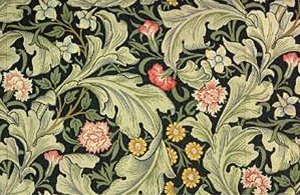
EYE: You are a huge admirer of the work of the great designer and writer William Morris. What has drawn you to him?
DIANE: I’ve always felt the most comfortable surrounded by things from the 1880’s to1916. The Edwardian time and the William Morris movement were so full of interest and guts. If everything in Duquette’s art was extravagant, everything in Morris’ art was balanced and modest. You couldn’t find two artists more diametrically opposed, and yet for me, they inspire the same idea of personal expression.
Morris honored the idea of man within a natural world. He had no interest in a life that did not include self-expression. How could we not be moved and inspired by someone who produced a life like his!

EYE: What is next for you? Another novel by chance?
DIANE: I’d like to do another novel. I love writing fiction. This time it will be about Bernadette, the older professor in my “Second Chances” book. She’s deep into her seventies yet everything modern comes from her.
I may call it “The Lowell Girl” from the name of women mill-workers in the 19th Century who worked in the fabric mills of Lowell, Massachusetts. They were intent on advancing themselves during the great American Labor Movement. Bernadette is a fascinating character.
EYE: Thanks for all of your interesting observations Diane. My dad was born in Lowell, Ma so I can’t wait to read your next novel!
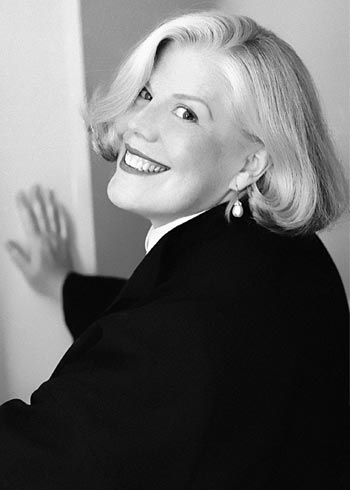
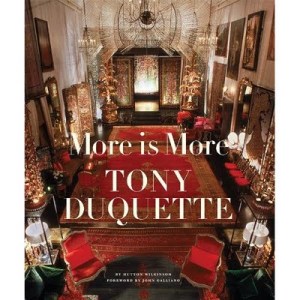
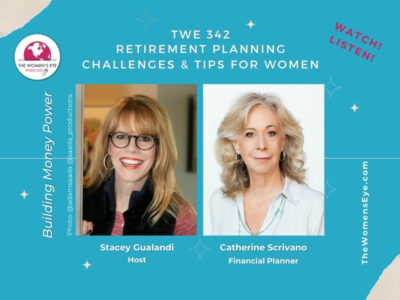
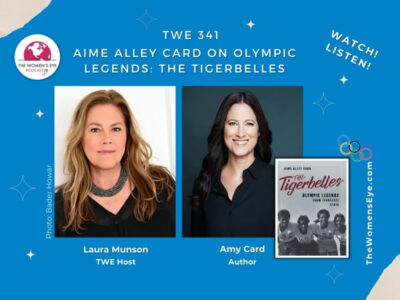

Leave a Reply